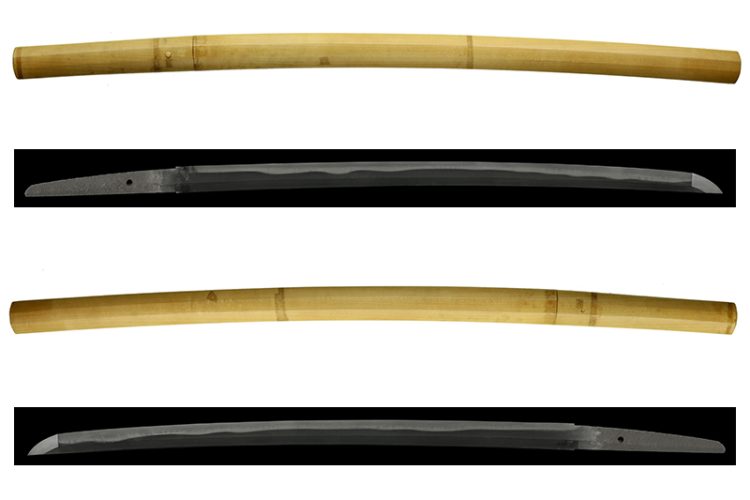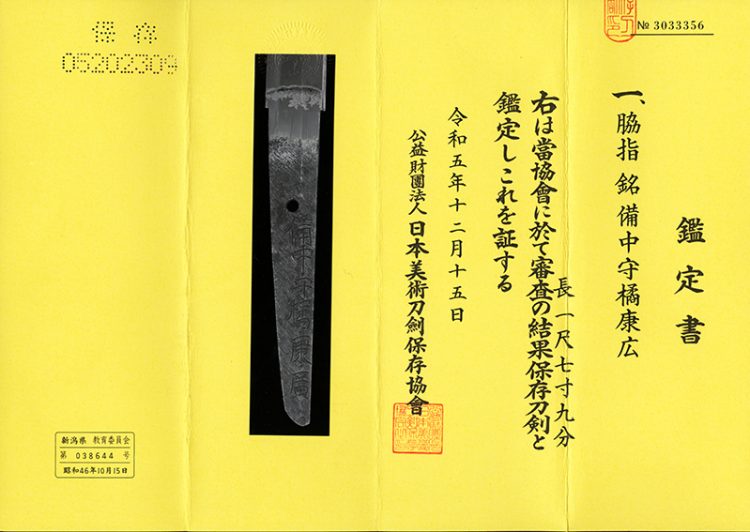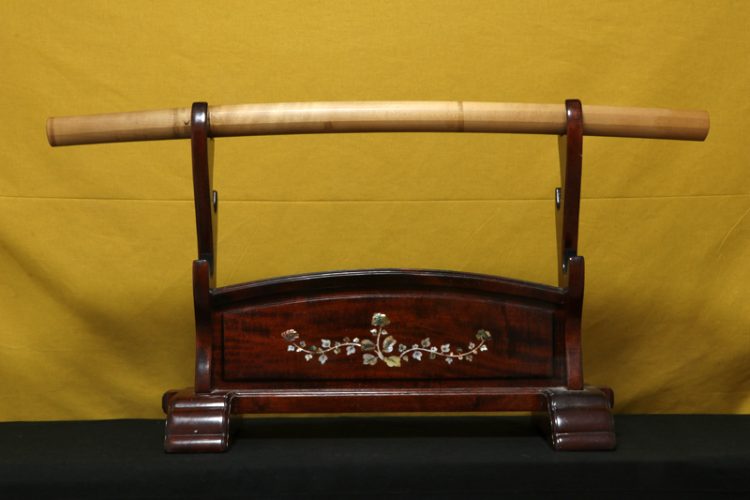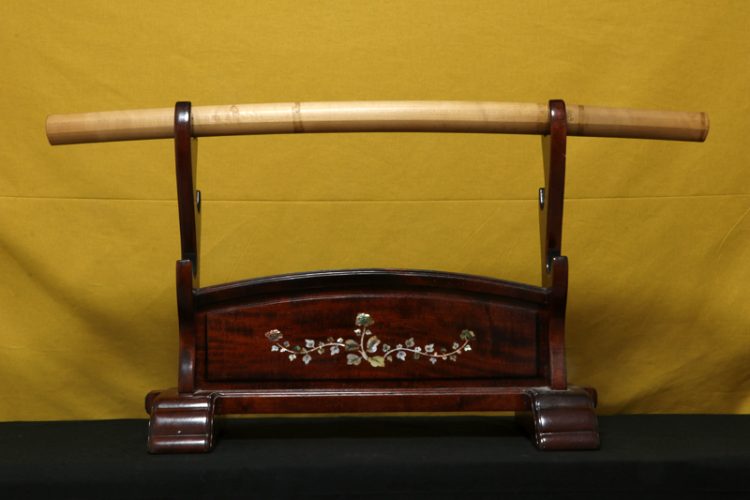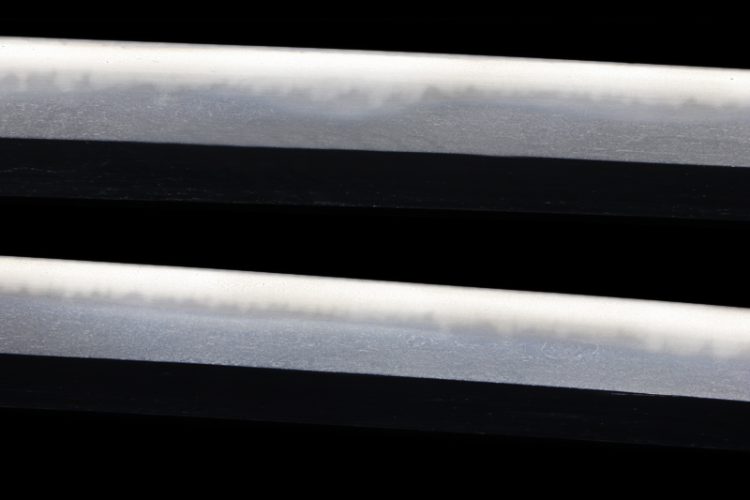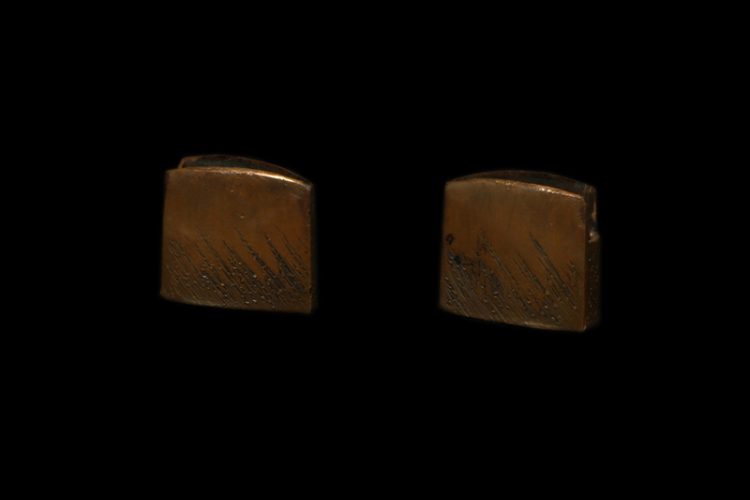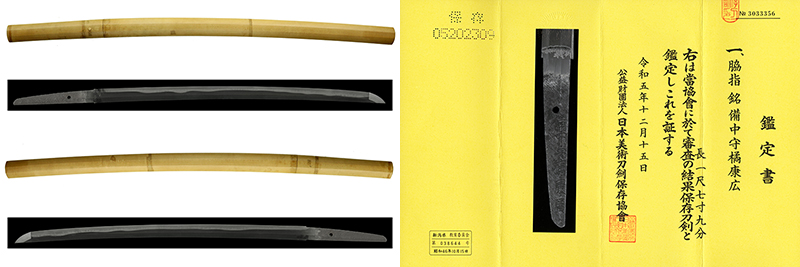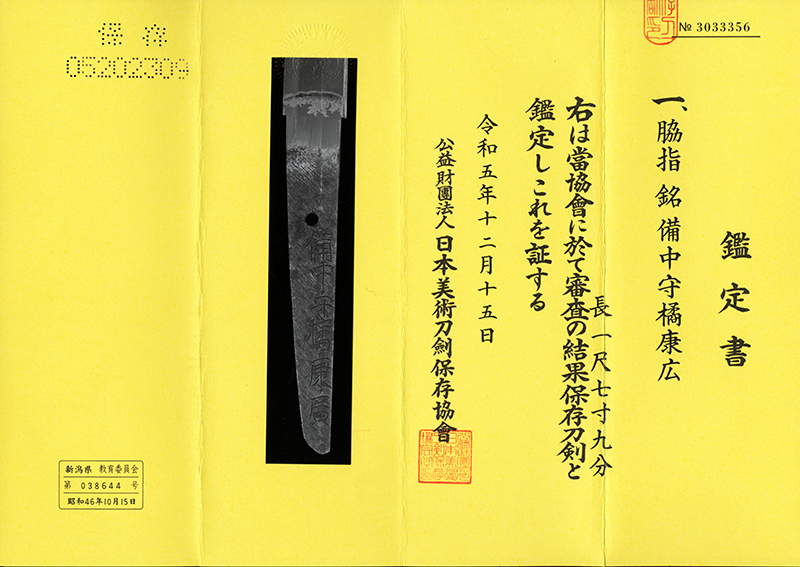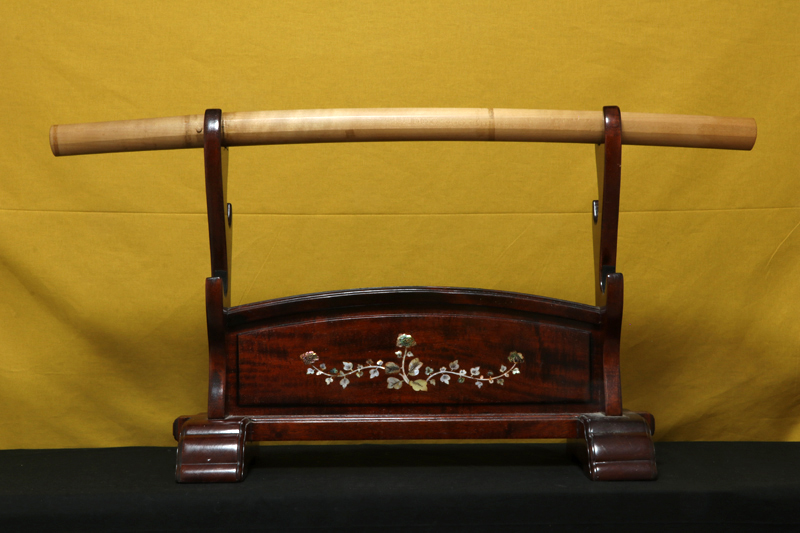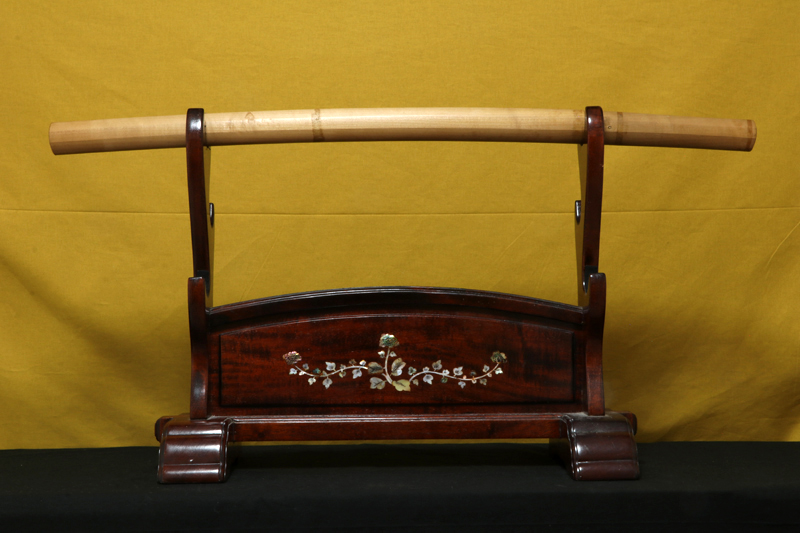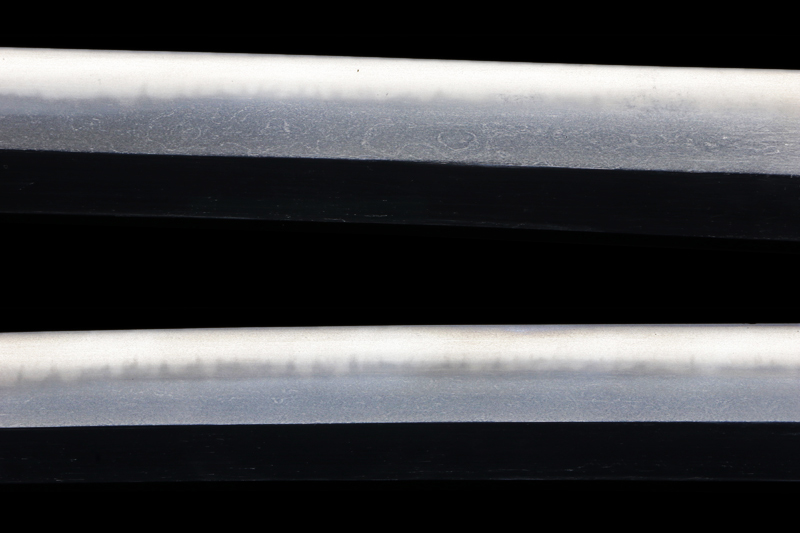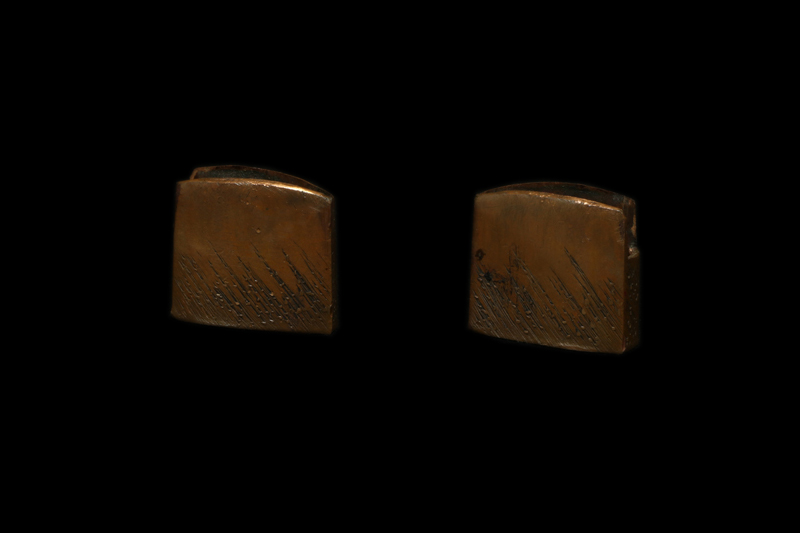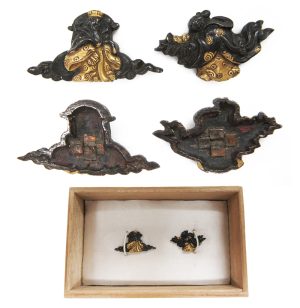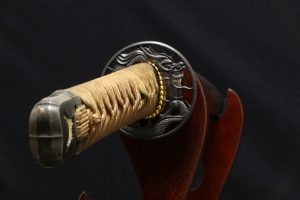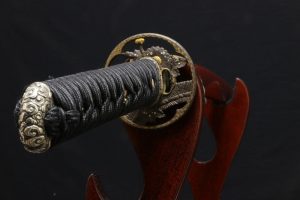説明
「刀姿 sword figure」
体配は鎬造り庵棟、身幅重尋常、反り浅く中鋒。茎は生で筋違い鑢がかかり、茎尻は栗尻。
「地鉄」
地鉄は、板目肌に小板目が交じり良く詰み、乱れ映りが立つ。
「刃紋」
刃紋は古一文字の様な丁子刃、刃縁砂流しかかり、刃中は金筋が入る。釯子は乱れ込み小丸に返る。
「特徴」
備中守橘康廣は江戸時代の初期の紀州を代表する刀工です。初代は近江國から徳川頼宣公の紀州入部に付き従い、重國と同じく紀州藩のお抱え藩工と成る。初代康廣は当初、紀伊國康廣、紀伊國富一康廣等と銘を切り、晩年に大坂へ移住、明暦2年8月備中守を受領後に、銘を備中守橘康廣と切るように成る。
本作は銘から見ると三代康廣の作と思われます、良く詰んだ地鉄に、古一文字の様な丁子刃を焼いた珍しい出来です。
Bitchū no Kami Tachibana Yasuhiro was a renowned swordsmith representing Kishu (modern-day Wakayama) during the early Edo period. The first-generation Yasuhiro hailed from Ōmi Province and accompanied Tokugawa Yorinobu when he assumed control of the Kishu domain, becoming a retained swordsmith of the Kishu Tokugawa clan alongside Shigekuni.
Initially, the first-generation Yasuhiro signed his works as Kii no Kuni Yasuhiro or Kii no Kuni Tōichi Yasuhiro. In his later years, he relocated to Osaka, and in August of Meireki 2 (1656), he was granted the honorary title of Bitchū no Kami by the imperial court, after which he began signing his works as Bitchū no Kami Tachibana Yasuhiro.
This piece is believed to be the work of the third-generation Yasuhiro, based on the signature. The blade exhibits a tightly forged jitetsu (steel surface) and a rare choji-midare hamon reminiscent of the ancient Ichimonji style, showcasing exceptional craftsmanship.
「拵 Koshirae」
ハバキ(habaki) :素銅地一重の腰祐乗。
鞘(saya) :白鞘。
「刀剣の状態 condition of blade」
研:良好です。
傷:欠点に成るような傷は有りません。
